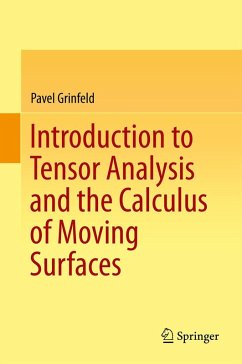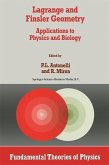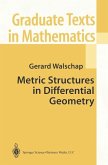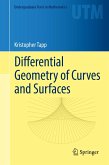This text is meant to deepen its readers' understanding of vector calculus, differential geometry and related subjects in applied mathematics. Designed for advanced undergraduate and graduate students, this text invites its audience to take a fresh look at previously learned material through the prism of tensor calculus. Once the framework is mastered, the student is introduced to new material which includes differential geometry on manifolds, shape optimization, boundary perturbation, and dynamic fluid film equations.
Tensor calculus is a powerful tool that combines the geometric and analytical perspectives and enables us to take full advantage of the computational utility of coordinate systems. The tensor approach can be of benefit to members of all technical sciences including mathematics and all engineering disciplines. If calculus and linear algebra are central to the reader's scientific endeavors, tensor calculus is indispensable. The language of tensors, originally championed by Einstein, is as fundamental as the languages of calculus and linear algebra and is one that every technical scientist ought to speak. The tensor technique, invented at the turn of the 20th century, is now considered classical. Yet, as the author shows, it remains remarkably vital and relevant. The author's skilled lecturing capabilities are evident by the inclusion of insightful examples and a plethora of exercises. A great deal of material is devoted to the geometric fundamentals, the mechanics of change of variables, the proper use of the tensor notation, and the discussion of the interplay between algebra and geometry. The early chapters have many words and few equations. The definition of a tensor comes only in Chapter 6 - when the reader is ready for it. While this text maintains a reasonable level of rigor, it takes great care to avoid formalizing the subject.
The last part of the textbook is devoted to the calculus of moving surfaces.It is the first textbook exposition of this important technique and is one of the gems of this text. A number of exciting applications of the calculus are presented including shape optimization, boundary perturbation of boundary value problems, and dynamic fluid film equations developed by the author in recent years. Furthermore, the moving surfaces framework is used to offer new derivations of classical results such as the geodesic equation and the celebrated Gauss-Bonnet theorem.
Tensor calculus is a powerful tool that combines the geometric and analytical perspectives and enables us to take full advantage of the computational utility of coordinate systems. The tensor approach can be of benefit to members of all technical sciences including mathematics and all engineering disciplines. If calculus and linear algebra are central to the reader's scientific endeavors, tensor calculus is indispensable. The language of tensors, originally championed by Einstein, is as fundamental as the languages of calculus and linear algebra and is one that every technical scientist ought to speak. The tensor technique, invented at the turn of the 20th century, is now considered classical. Yet, as the author shows, it remains remarkably vital and relevant. The author's skilled lecturing capabilities are evident by the inclusion of insightful examples and a plethora of exercises. A great deal of material is devoted to the geometric fundamentals, the mechanics of change of variables, the proper use of the tensor notation, and the discussion of the interplay between algebra and geometry. The early chapters have many words and few equations. The definition of a tensor comes only in Chapter 6 - when the reader is ready for it. While this text maintains a reasonable level of rigor, it takes great care to avoid formalizing the subject.
The last part of the textbook is devoted to the calculus of moving surfaces.It is the first textbook exposition of this important technique and is one of the gems of this text. A number of exciting applications of the calculus are presented including shape optimization, boundary perturbation of boundary value problems, and dynamic fluid film equations developed by the author in recent years. Furthermore, the moving surfaces framework is used to offer new derivations of classical results such as the geodesic equation and the celebrated Gauss-Bonnet theorem.
Dieser Download kann aus rechtlichen Gründen nur mit Rechnungsadresse in A, B, BG, CY, CZ, D, DK, EW, E, FIN, F, GR, HR, H, IRL, I, LT, L, LR, M, NL, PL, P, R, S, SLO, SK ausgeliefert werden.
From the book reviews:
"The textbook is meant for advanced undergraduate and graduate audiences. It is a common language among scientists and can help students from technical fields see their respective fields in a new and exiting way." (Maido Rahula, zbMATH, Vol. 1300, 2015)
"This book attempts to give careful attention to the advice of both Cartan and Weyl and to present a clear geometric picture along with an effective and elegant analytical technique ... . it should be emphasized that this book deepens its readers' understanding of vector calculus, differential geometry, and related subjects in applied mathematics. Both undergraduate and graduate students have a chance to take a fresh look at previously learned material through the prism of tensor calculus." (Andrew Bucki, Mathematical Reviews, November, 2014)
"The textbook is meant for advanced undergraduate and graduate audiences. It is a common language among scientists and can help students from technical fields see their respective fields in a new and exiting way." (Maido Rahula, zbMATH, Vol. 1300, 2015)
"This book attempts to give careful attention to the advice of both Cartan and Weyl and to present a clear geometric picture along with an effective and elegant analytical technique ... . it should be emphasized that this book deepens its readers' understanding of vector calculus, differential geometry, and related subjects in applied mathematics. Both undergraduate and graduate students have a chance to take a fresh look at previously learned material through the prism of tensor calculus." (Andrew Bucki, Mathematical Reviews, November, 2014)









